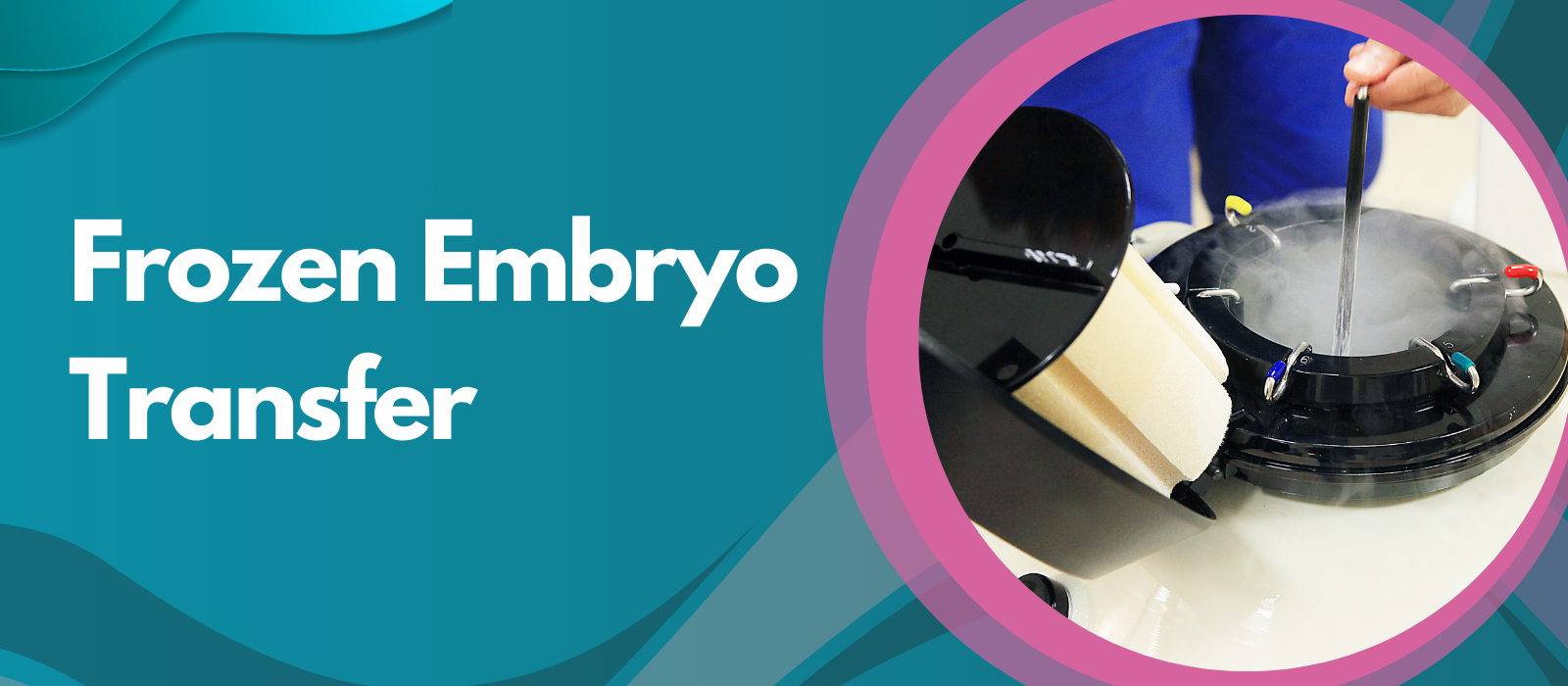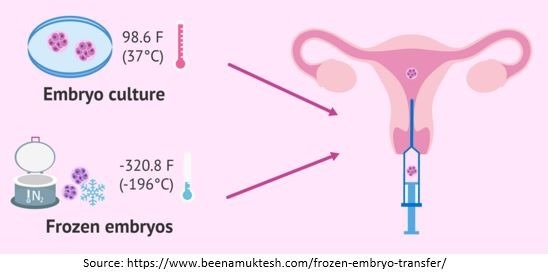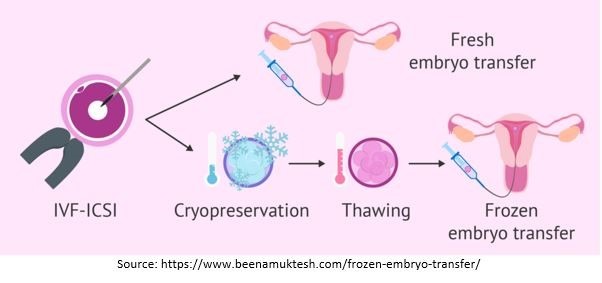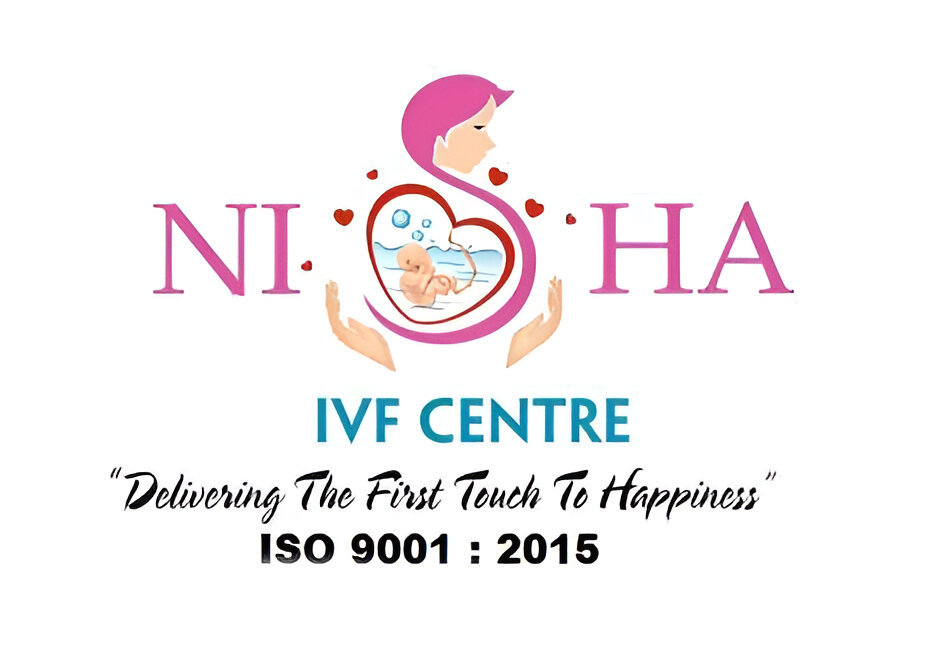
Frozen Embryo Transfer in Ahmedabad, India
Have you experienced failure in the previous IVF cycle?
Do you want to minimize the risk of OHSS?
If yes, then we at Nisha IVF Centre can overcome these issues through Frozen Embryo Transfer (FET) procedure.
FET is an advanced method of Assisted Reproductive Techniques that can efficiently address the above problems.
Visit us at Nisha IVF Centre, one of the leading IVF Centre in Ahmedabad. We have achieved a higher success rate of IVF treatment during the first cycle for most patients.
At Nisha IVF Centre, we specialize in a wide range of advanced reproductive treatments, including IVF, ICSI, Frozen Embryo Transfer, Cryopreservation, etc. Our IVF doctors in Ahmedabad provide the most effective and affordable treatments to our patients to achieve a successful pregnancy.
What is a Frozen Embryo Transfer (FET)?
A Frozen Embryo Transfer (FET) is a technique usually implemented during IVF and ICSI cycles. It involves thawing cryopreserved embryos from a previous fresh IVF or donor egg or sperm cycle. Then, transferring one or two of those embryos into the women’s uterus.
Looking for an Frozen Embryo Transfer ?
Fill Out the Form Below for an instant Appointment with the Doctor
What are the Steps Involved in the Frozen Embryo Transfer?
Each method of sperm retrieval is slightly different from the other. The various sperm retrieval procedures are as follows:
Preliminary Screening
Your fertility specialist may check you and your partner for infections such as HIV, Hepatitis B, etc.
Embryo Freezing
A superior technique referred to as rapid freezing is used to flash-freeze the chosen embryos. The process ensures minimum damage to the embryos and offers a 99% survival rate upon thawing.

Preparation for FET
To prepare the endometrial lining, your fertility specialist will prescribe Oestrogen pills and progesterone later.
We continuously monitor the development with ultrasound. If everything is well, we schedule the embryo transfer process.
Frozen Embryo Transfer
When your uterus is receptive to embryos, your fertility expert will thaw one or more embryos and place them into the uterine cavity. We at Nisha IVF Centre believe in delivering you the best possible pregnancy. Thereby, we limit the number of embryos; we deposit only two per cycle for successful results.

Why should I choose the FET procedure?
You may prefer to have a FET-IVF cycle due to the below conditions:
1. Have Extra Embryos
During IVF treatment, one or many embryos may result. But it is safe only to transfer one or two per IVF cycle. Sometimes, due to several factors, embryo implantation doesn’t occur, resulting in IVF failure. Hence, most patients choose to freeze or cryopreserve their extra embryos for future use for the safer side.
You have two options in such a condition: do another fresh IVF cycle or transfer your previously cryopreserved embryos. The most affordable option would be to transfer one of your previously frozen embryos.
2. Want to Give Your IVF Conceived Child a Sibling
Cryopreserved embryos can survive on ice indefinitely. In the future, you may choose to do a FET-IVF cycle to give your IVF conceived kid a sibling.
3. Embryos Are Being Genetically Screened
Pre-implantation Genetic Diagnosis (PGD) and Pre-implantation Genetic Screening (PGS) are a type of assisted reproductive technologies. These techniques allow the screening of embryos for specific congenital diseases or defects.
4. If You’re at High Risk of Ovarian Hyper Stimulation Syndrome in Fresh Embryo Transfer
Ovarian hyperstimulation syndrome (OHSS) occurs from the side effects of fertility drugs. It can be severe in rare cases.
If your risk of OHSS seems high before a fresh embryo transfer, your doctor may cancel it. And cryopreserve all the embryos as pregnancy can exacerbate OHSS. It may also take more time to recover from OHSS if you’re pregnant. Once you’ve recovered from OHSS, we can schedule a frozen embryo transfer cycle.
Looking for an IVF Treatment?
Fill Out the Form Below for an instant Appointment with the Doctor
What are the Advantages of FET?
- Has a higher success rate
- Is less stressful
- Can be scheduled easily
- Allows PGT
- Gives a natural uterine environment to conceive
What is the Frozen Embryo Transfer Success Rates?
- The success rate of IVF Treatment is higher when we use frozen embryos as opposed to fresh embyros.
- Frozen embryos tend to have a higher success rate as the embryos that survive the thawing process will be healthier chances of achieving a successful IVF pregnancy.
- Likewise, in the case of a donor cycle, donor eggs come from a younger donor who is medically fit and tends to give better success rates.
How much does Frozen Embryo Transfer Cost in Ahmedabad?
The frozen embryo transfer price is much lesser than the cost of IVF in Ahmedabad. It is so, as you don’t have to undergo egg retrieval, insemination, or embryo culture. Besides, medication costs are also less.
Nisha IVF Centre is a renowned name when it comes to the best FET procedure. Moreover, the frozen embryo transfer cost at our centre is much affordable.
If you are interested in fertility treatment, we would be glad to meet with you at Nisha IVF Centre. Please schedule an appointment today or call us at +919081233800, +912717233800.
Frequently Asked Questions
What restrictions should one take after a frozen embryo transfer?
Most women prefer to take it easy and lie down after a frozen embryo transfer. But there is no need for any restrictions on your activity. You can walk and perform all of your regular activities as soon as after the procedure.
Is Frozen Embryo Transfer painful?
You may get some discomfort during the procedure, but you should not experience much pain. You can take the prescribed medicines to manage the pain after the procedure.
Is the schedule of FET flexible?
Compared to the IVF cycle, a frozen embryo cycle has a much more flexible schedule. Your doctor can alter the schedule as necessary during most of the process.
How can you tell if an embryo transfer has gone wrong?
The pregnancy test is the only reliable diagnostic test for determining the success or failure of assisted reproduction treatment. To assess the level of -hCG hormone (“beta”) in the body, a urine or blood test can be used.
